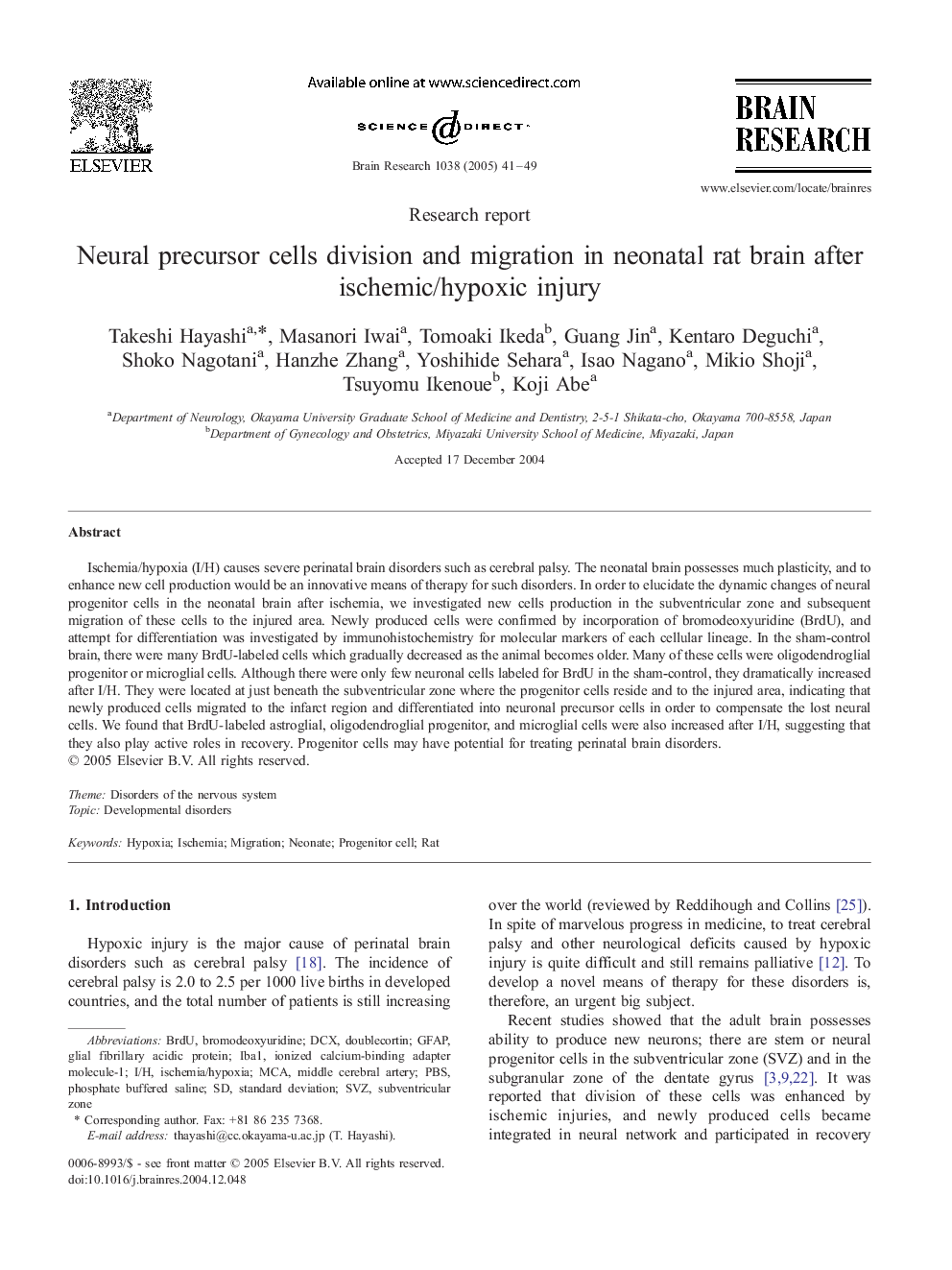| کد مقاله | کد نشریه | سال انتشار | مقاله انگلیسی | نسخه تمام متن |
|---|---|---|---|---|
| 9416705 | 1292980 | 2005 | 9 صفحه PDF | دانلود رایگان |
عنوان انگلیسی مقاله ISI
Neural precursor cells division and migration in neonatal rat brain after ischemic/hypoxic injury
دانلود مقاله + سفارش ترجمه
دانلود مقاله ISI انگلیسی
رایگان برای ایرانیان
کلمات کلیدی
PBSSVZIBA1DcxGFAPMCADevelopmental disorders - اختلالات رشدیDisorders of the nervous system - اختلالات سیستم عصبیstandard deviation - انحراف معیارIschemia - ایسکمیIschemia/hypoxia - ایسکمی / هیپوکسیBrdU - بروموداکسی اوریدینbromodeoxyuridine - برومودسوویریدینdoublecortin - دوچرخهprogenitor cell - سلول پیش از قاعدگیmiddle cerebral artery - شریان مغزی میانیPhosphate buffered saline - فسفات بافر شورsubventricular zone - منطقه فرعیMigration - مهاجرتRat - موش صحراییionized calcium-binding adapter molecule-1 - مولکول-آداپتور اتصال دهنده کلسیم یونیزه-1Neonate - نوزاد Hypoxia - هیپوکسیGlial fibrillary acidic protein - پروتئین اسیدی فیبریلاسیون گلایال
موضوعات مرتبط
علوم زیستی و بیوفناوری
علم عصب شناسی
علوم اعصاب (عمومی)
پیش نمایش صفحه اول مقاله

چکیده انگلیسی
Ischemia/hypoxia (I/H) causes severe perinatal brain disorders such as cerebral palsy. The neonatal brain possesses much plasticity, and to enhance new cell production would be an innovative means of therapy for such disorders. In order to elucidate the dynamic changes of neural progenitor cells in the neonatal brain after ischemia, we investigated new cells production in the subventricular zone and subsequent migration of these cells to the injured area. Newly produced cells were confirmed by incorporation of bromodeoxyuridine (BrdU), and attempt for differentiation was investigated by immunohistochemistry for molecular markers of each cellular lineage. In the sham-control brain, there were many BrdU-labeled cells which gradually decreased as the animal becomes older. Many of these cells were oligodendroglial progenitor or microglial cells. Although there were only few neuronal cells labeled for BrdU in the sham-control, they dramatically increased after I/H. They were located at just beneath the subventricular zone where the progenitor cells reside and to the injured area, indicating that newly produced cells migrated to the infarct region and differentiated into neuronal precursor cells in order to compensate the lost neural cells. We found that BrdU-labeled astroglial, oligodendroglial progenitor, and microglial cells were also increased after I/H, suggesting that they also play active roles in recovery. Progenitor cells may have potential for treating perinatal brain disorders.
ناشر
Database: Elsevier - ScienceDirect (ساینس دایرکت)
Journal: Brain Research - Volume 1038, Issue 1, 15 March 2005, Pages 41-49
Journal: Brain Research - Volume 1038, Issue 1, 15 March 2005, Pages 41-49
نویسندگان
Takeshi Hayashi, Masanori Iwai, Tomoaki Ikeda, Guang Jin, Kentaro Deguchi, Shoko Nagotani, Hanzhe Zhang, Yoshihide Sehara, Isao Nagano, Mikio Shoji, Tsuyomu Ikenoue, Koji Abe,